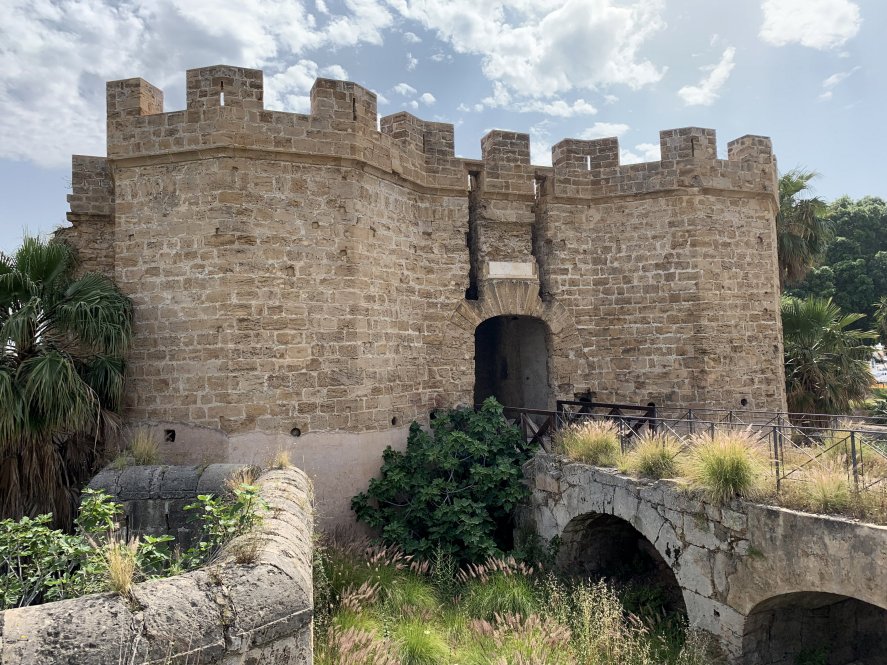Castello a Mare

In medieval texts Castello a Mare is often referred to as Castrum Inferior to distinguish it from the Castrum Superior
- the Royal Palace. The castle was already in operation on 9
March 1161 when knights from the fortress sallied forth and killed
eunuchs and Muslims fleeing from the king's palace
as it fell to an assault by rebels and prisoners. A few years
later the castle's constable was Robert Calatabellota, who was friendly
to the eunuchs and enjoyed tormenting Christian prisoners. This
has encouraged the idea that the castle was originally a Muslim
fortress - as if they'd have stayed in occupation for a century after
the Christians conquered Palermo in 1072. Certainly the castle appears in the Book of Roger which was completed about 1154 and therefore predates this.
In 1169 a Messina rumour had it that King William II
(1166-89) had been struck down by the Chancellor Stephen Peche (d.1169)
and that Prince Henry was besieged in Mare castle with a few loyal
knights. Obviously the castle, rather than the Norman palace, was seen as the main defence in Palermo.
In the event neither ‘fact' was true. In 1190 it was
described as a former palace which checked the lashings of the waves by
walls armed with a large number of towers. In 1272 it still
housed a garrison of one squire and 6 sergeants. By the fifteenth
century it was the seat of the viceroyal government and the residence
of the viceroy until 1553 when it became the seat of the Tribunal of
the Holy Inquistion. Seen as a symbol of Bourbon tyranny the
fortress was attacked and semi demolished in 1860 by Garibaldi.
After this, what remained was used as a barracks until 1922 when the
government ordered it demolished to expand the port of Palermo.
This uncovered the ‘Arab' keep, the circular gun tower and the
ditch, before the site was given over to warehouses and a car park
which themselves were damaged by bombs in 1943. The port
buildings were only cleared in the 1980s and the castle rediscovered.
Description
There are traces of a horribly rebuilt Norman keep centrally in the
site. Of the rest only the north front remains vaguely intact.
Artillery towers stand at either end and a partially
rebuilt gatehouse in between. This has octagonal towers and has
been cut down to 2 floors which were modified for mounting artillery.
An inscription mounted above the gate states that it was built by
King Frederick II (1198-1250). As a twin towered gatehouse this structure is unique in Sicily.
Why not join me at other Sicilian
castles? Information on this and other tours can be found at Scholarly
Sojourns.
Copyright©2019
Paul Martin Remfry

